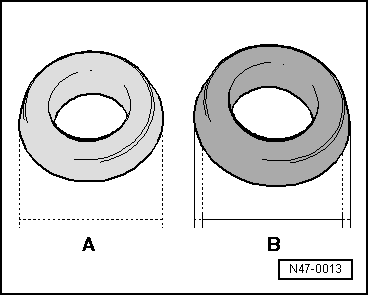| The boiling point decreases as the water content increases, which means a considerable rise in brake fluid temperature can lead to formation of vapour bubbles and brake failure. |
| The colour of the brake fluid becomes darker over the course of time. A dark brake fluid colour is not an indication of its condition. The change in colour is caused by chemical reactions and may occur within a short period (several weeks), particularly in vehicles equipped with ABS. |

WARNING | Rubber parts of brake system (sleeves, seals) are not compatible with mineral oil, fuel and cleaning agents. |
|
| Even minute quantities coming into contact with a seal or sleeve will affect the component and could impair brake operation. The consequences of a contaminated brake system only become apparent months later, and then give rise to greater expenses, particularly in vehicles equipped with ABS. |
|
|

|



